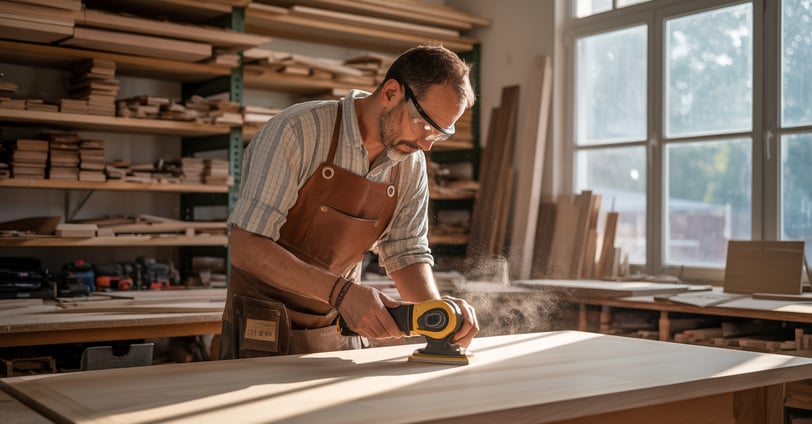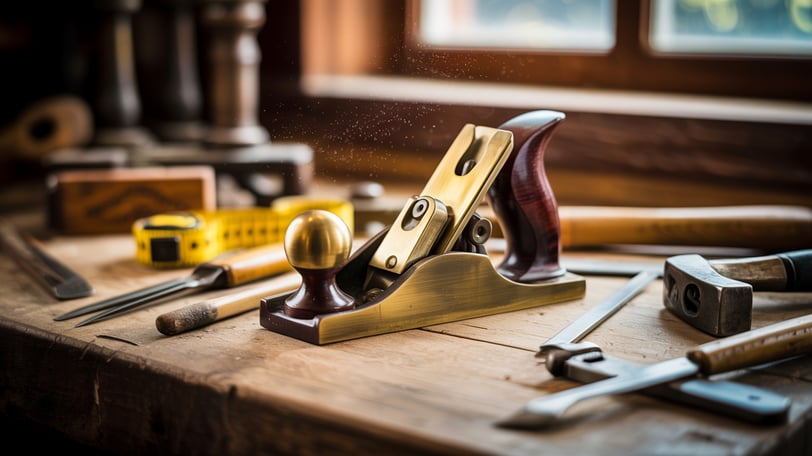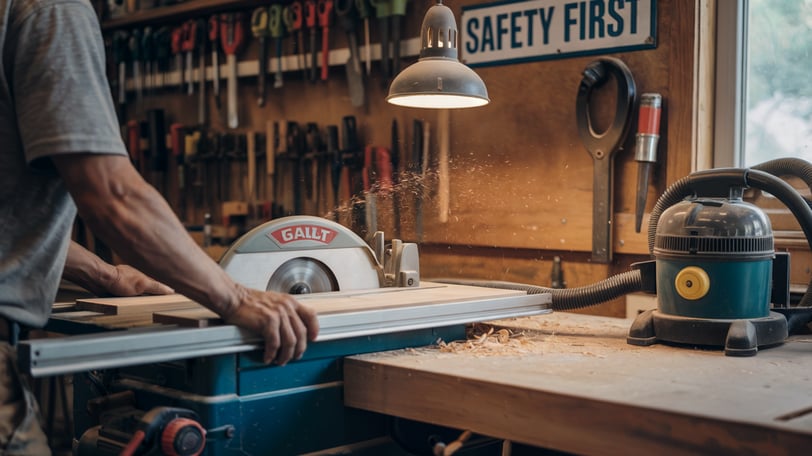Essential Tool Tips for Working With Wood Like a Pro
Want to step up your woodworking game? These essential tool tips for working with wood like a pro will help you handle projects with confidence, precision, and less frustration.


I’ll be honest—when I first started woodworking, I thought all I needed was a saw, a hammer, and some nails. Boy, was I wrong! Over time, I’ve learned that the secret to crafting beautiful, sturdy pieces isn't just about creativity or passion. It’s about knowing your tools and how to use them right. Whether you're just starting or looking to refine your skills, I believe these essential tool tips for working with wood like a pro can truly make your woodworking journey smoother, safer, and a whole lot more fun.


Why Tool Knowledge Is Everything in Woodworking
Before we get into the nitty-gritty, let’s talk about why tool know-how is such a game-changer. When you understand how each tool works and what it's best used for, your cuts are cleaner, your joints are tighter, and your projects look like something out of a high-end workshop. You’ll also save time and reduce the risk of mistakes—or worse, injuries.
1. Start with the Right Basics
If you’re a beginner, don’t fall into the trap of buying every tool you see online. Focus first on these:
Measuring Tape and Combination Square – For accurate measurements and angles.
Claw Hammer – A reliable go-to for driving and pulling nails.
Chisels – Invest in a good set; they come in handy more often than you’d think.
Hand Saw and Circular Saw – Hand saws for finesse, circular saws for power cuts.
These basics are often overlooked, but they’re critical. I’ve noticed many folks underestimate just how important a sharp pencil and a reliable measuring tape can be. Trust me—they’re your unsung heroes.
2. Keep Your Blades Razor Sharp
Here’s the truth: dull tools are dangerous tools. Whether you’re using a hand plane, a chisel, or a table saw, the sharper the blade, the cleaner and safer the cut.
I think one of the most satisfying things in woodworking is running a sharp hand plane over a slab of wood and seeing those delicate curls peel off. It’s like magic. Make it a habit to check your blades regularly and sharpen them as needed—it can make a world of difference in your results.
Related Tip: Use a sharpening guide if you’re not confident freehand sharpening. It can really improve consistency.
3. Know Your Power Tools Like the Back of Your Hand
Power tools are a blessing when used properly and a headache when you’re unsure of what you’re doing. If you're serious about learning essential tool tips for working with wood like a pro, take time to learn how to safely operate:
Table Saw
Router
Orbital Sander
Power Drill and Impact Driver
In my opinion, a router is one of the most versatile tools out there. From making decorative edges to cutting perfect dados, it’s a must-have once you're ready to go beyond the basics. But only if you respect it. Watch tutorials, read the manual (yep, I said it!), and practice on scrap wood before jumping into your main project.
4. Use Jigs to Increase Accuracy and Speed
Jigs might seem unnecessary at first, but once you use one, you’ll be hooked. Whether it's a miter jig, doweling jig, or a homemade guide for your circular saw, jigs help you repeat tasks with precision. And when you’re working on multiple pieces, they save so much time.
I’ve made a simple crosscut sled for my table saw, and honestly, it’s one of the best things I ever built. No more second-guessing if my cuts are square—it just works.


Essential Tool Tips for Working With Wood Like a Pro: Don’t Skip the Jigs
This is one area where even seasoned pros continue to experiment and improve. Once you start customizing your jigs, you’ll wonder how you ever got by without them.
5. Clamp Like You Mean It
Here's a golden rule I’ve learned: You can never have too many clamps. Whether you’re gluing panels, holding a jig in place, or securing your project while you drill, clamps keep things steady—and that leads to better craftsmanship.
There’s a difference between barely holding something and locking it down solid. Pipe clamps, bar clamps, spring clamps—get a variety. I’ve slowly collected mine over time, and it’s made every project feel more manageable.
6. Dust Collection Matters More Than You Think
At first, I didn’t think dust was a big deal. A little sweeping here and there, right? Nope. Wood dust isn’t just messy—it’s harmful to breathe and can clog up your tools. Investing in a simple shop vacuum or even a DIY dust collector will keep your shop safer and your tools running longer.
7. Maintain and Respect Your Tools
This might sound obvious, but I’ve seen it too many times—tools left outside, blades rusting, batteries drained. If you want to work like a pro, treat your tools like a pro. Clean them, oil them, store them properly. Not only will they last longer, but they’ll also perform better when you need them most.
A small toolbox, a labeled pegboard, or even a simple shelving system can make staying organized a breeze.
Final Thoughts: You Don’t Need Every Tool—Just the Right Ones
At the end of the day, I believe woodworking is as much about the journey as it is about the finished piece. Learning how to handle your tools with confidence and care will only make that journey smoother—and way more rewarding. If there’s one thing I’d tell my past self, it’s this: slow down, learn the tools, and enjoy the process.
